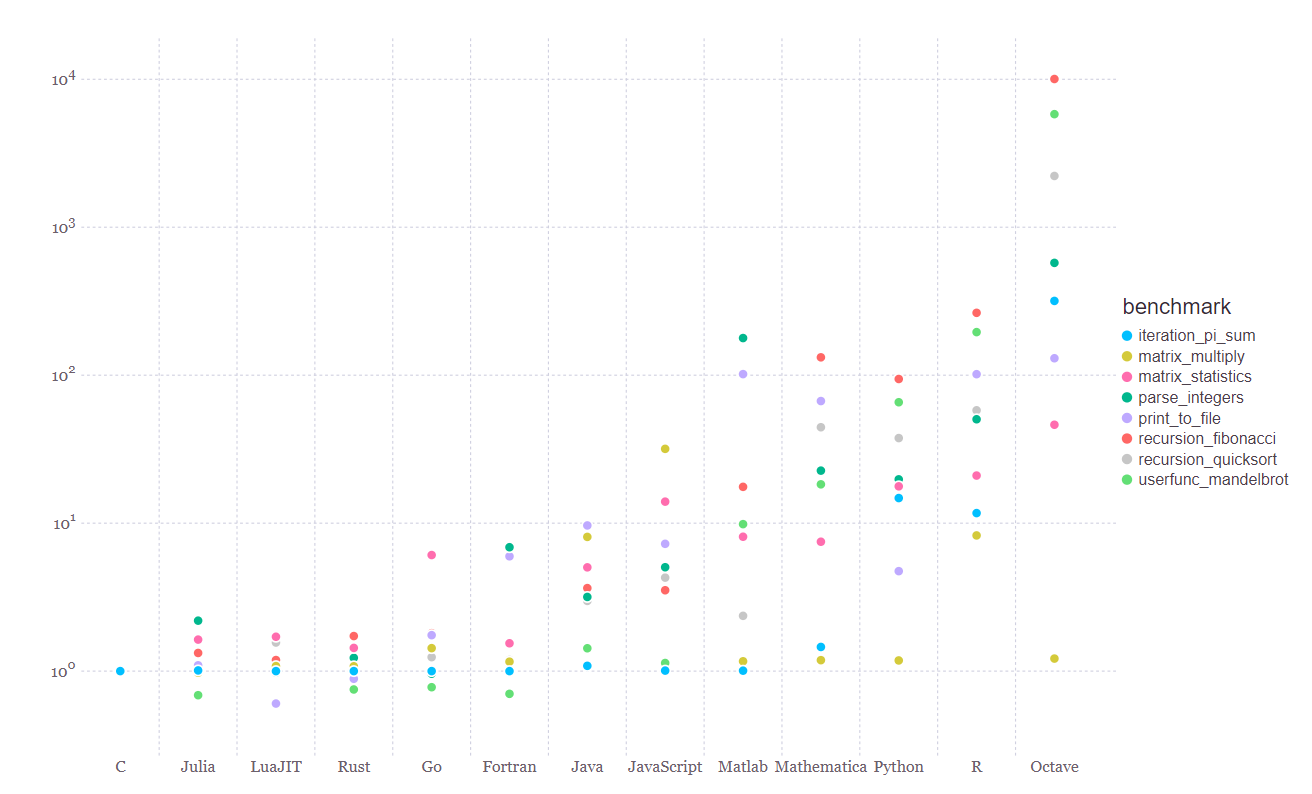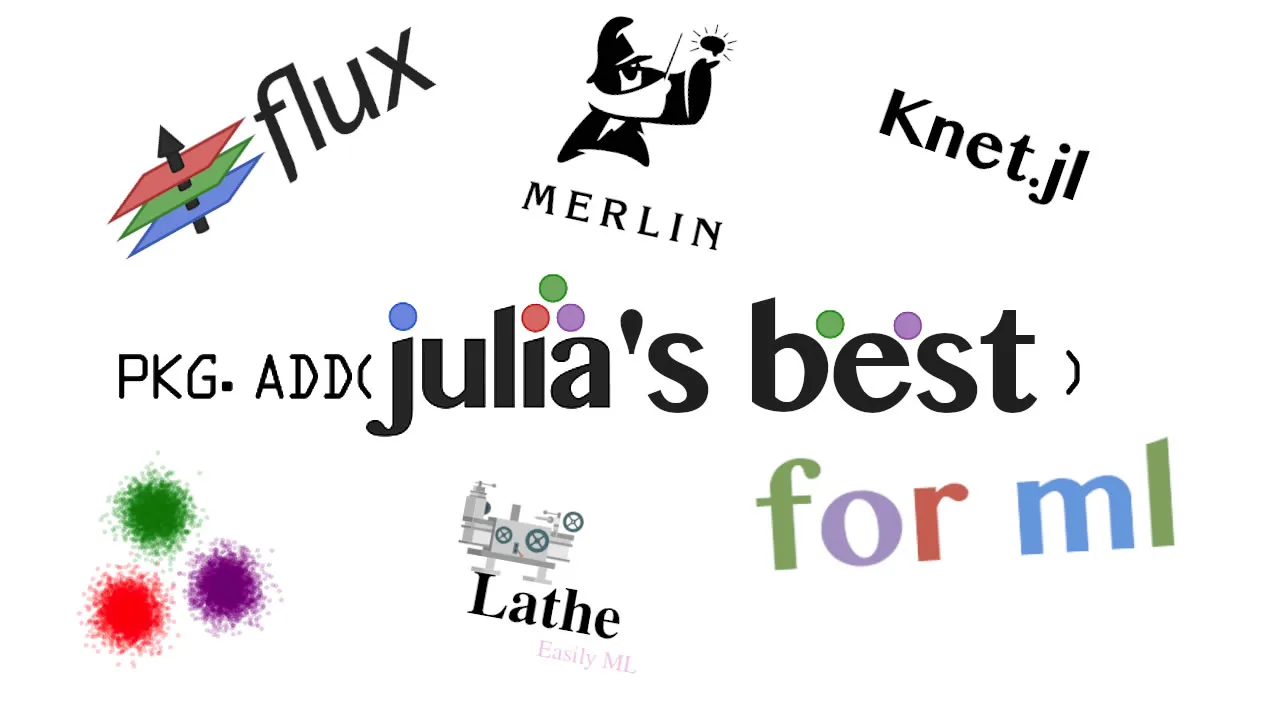Julia is a high-level dynamic programming language, that is used by Machine learning Researchers and Practitioners. Julia is developing the number of Machine learning packages and Frameworks Rapidly. As of now Python is the Industry leader in Data science and Machine Learning context.
Python has many number of ML packages, Libraries and ML Web frameworks like Streamlit, Flask, Plotly and many more, which makes python No 1 programming Language and developers first choice. But Python has one of the major problem which may give option to many market like Julia, Go and many other programming language to replace Python. Replacing python will not be simple task, it will take around 4 to 5 years.
One programming language which is in competition with python is Julia. Like Python Julia is also a high-level programming language and we need to write less amount of code in Julia which is the same case as of python. But if we compare the speed of python with Julia, here Julia is the 10 times faster than Python and we need to remember Julia solves the speed limitation of python. Julia is very fastest running and executing language just after C++. Below are the comparable chart of different different programming language. Clearly we can see How fast Julia is?

Programming Language benchmark
If we compare Python with Julia, still as of now Python is a leader because as we know python solves many industrial use cases. If we compare the amount of Packages and Libraries in both python and Julia, Python is a big leader, Still Julia is investing more on the packages and Framework development. If we compare in terms of speed Julia is the big leader comparing with every other programming language like java, c## or many more.
In this article we will try to understand the top 9 ML Julia package or Machine Learning. If you want to know more about Machine Learning or Python you can visit my older articles on these topics under same account. From now I will be more focusing on Julia as I told u, Julia will be one of the most used and popular Programming Language of Future in coming 4–5 years and we are expecting a lot of development in Julia community in the coming 2–3 years. Julia basically uses the parallel programming down the line to solve big data problems and to implement this feature, it is very simple in Julia. In the future Article I will be explaining you each and every concepts related to Julia like Data structure, julia variables, julia keywords and many more. One thing we need to keep in mind our approach will be same that we have learnt in our earlier articles. Concepts will remain same but the programming Language and the syntax will change. Only we need to focus on the the Syntax and Language, rest job we already know.
Julia was developed in 2012. Till now Julia has been downloaded 17 million times and counting. Julia has more than 1000 active contributors on Github. Top 9 ML Framework in Julia is below:
- Flux — Flux is deep learning and machine learning library that provides a single, intuitive way to define models, just like mathematical notation. Any existing Julia libraries are differentiable and can be incorporated directly into Flux models. The intuitive features include compiled eager code, differentiable programming, GPU support, ONNX, among others. click here to know more
- Mocha.jl — Mocha.jl is a deep learning library for the Julia programming language, which includes a number of features mentioned : Written in Julia and for Julia: Mocha.jl is completely written in Julia. This means that the library has native Julia interfaces and is capable of interacting with core Julia functionality as well as other Julia packages.
- Minimum dependencies: This library includes minimum dependencies to use Julia as backend, and there is zero need for root privileges or installation of any external dependencies.
- **Multiple backends: **This library comes with a GPU backend, combining customised kernels with highly efficient libraries from NVIDIA such as cuBLAS, cuDNN, etc.
- Modularity and correctness: This library is implemented in a modular architecture. Click here to know more
- Knet — Knet is a deep learning framework implemented in the Julia programming language. Knet allows models to be defined by just describing their forward computation in plain Julia, allowing the use of loops, conditionals, recursion, closures, tuples, dictionaries, array indexing, concatenation and other high-level language features. The library supports GPU operations and automates differentiation using dynamic computational graphs for models defined in plain Julia. Click here to know more about Knet
- **Scikitlearn.jl **— ScikitLearn.jl is a Julia wrapper for the popular Python library Scikit-learn. It implements the Scikit-learn interface and algorithms in Julia. It provides a uniform interface for training and using models, as well as a set of tools for chaining (pipelines), evaluating, and tuning model hyperparameters. It supports both models from the Julia ecosystem and those of the Scikit-learn library. Click here to know more about Scikitlearn.jl
- Tensorflow.jl — TensorFlow.jl is also a Julia wrapper for popular open-source machine learning TensorFlow. This wrapper can be used for various purposes such as fast ingestion of data, especially data in uncommon formats, fast postprocessing of inference results, such as calculating various statistics and visualisations that do not have a canned vectorized implementation. Click here to know more about tensorflow.jl
- **MXNet.jl **— MXNet.jl is the Apache MXNet Julia package that brings flexible and efficient GPU computing and state-of-art deep learning to Julia. The features of this library include efficient tensor and matrix computation across multiple devices, including multiple CPUs, GPUs and distributed server nodes. It also has flexible symbolic manipulation to composite and construction of state-of-the-art deep learning models. Click here to know more about MXNet.jl
- **MLBase.jl **— MLBase.jl is a Julia package that provides useful tools for machine learning applications. It provides a collection of useful tools to support machine learning programs, including data manipulation and preprocessing, score-based classification, performance evaluation, cross-validation and model tuning. Click here to know more about MLBase.jl
- Merlin — Merlin is a deep learning framework written in Julia. The library aims to provide a fast, flexible and compact deep learning library for machine learning. The requirements of this library are Julia 0.6 and g++ for OSX or Linux. The library runs on CPUs and CUDA GPUs. Click here to know more about Merlin
- **Strada **— Strada is an open-source deep learning library for Julia, based on the popular Caffe framework. The library supports convolutional and recurrent neural network training, both on CPUs and GPUs. Some of the features of this library include flexibility, support for Caffe features, integration with Julia and other such. Click here to know more about Strada.
#julia #machine-learning #deep-learning #python #developer
